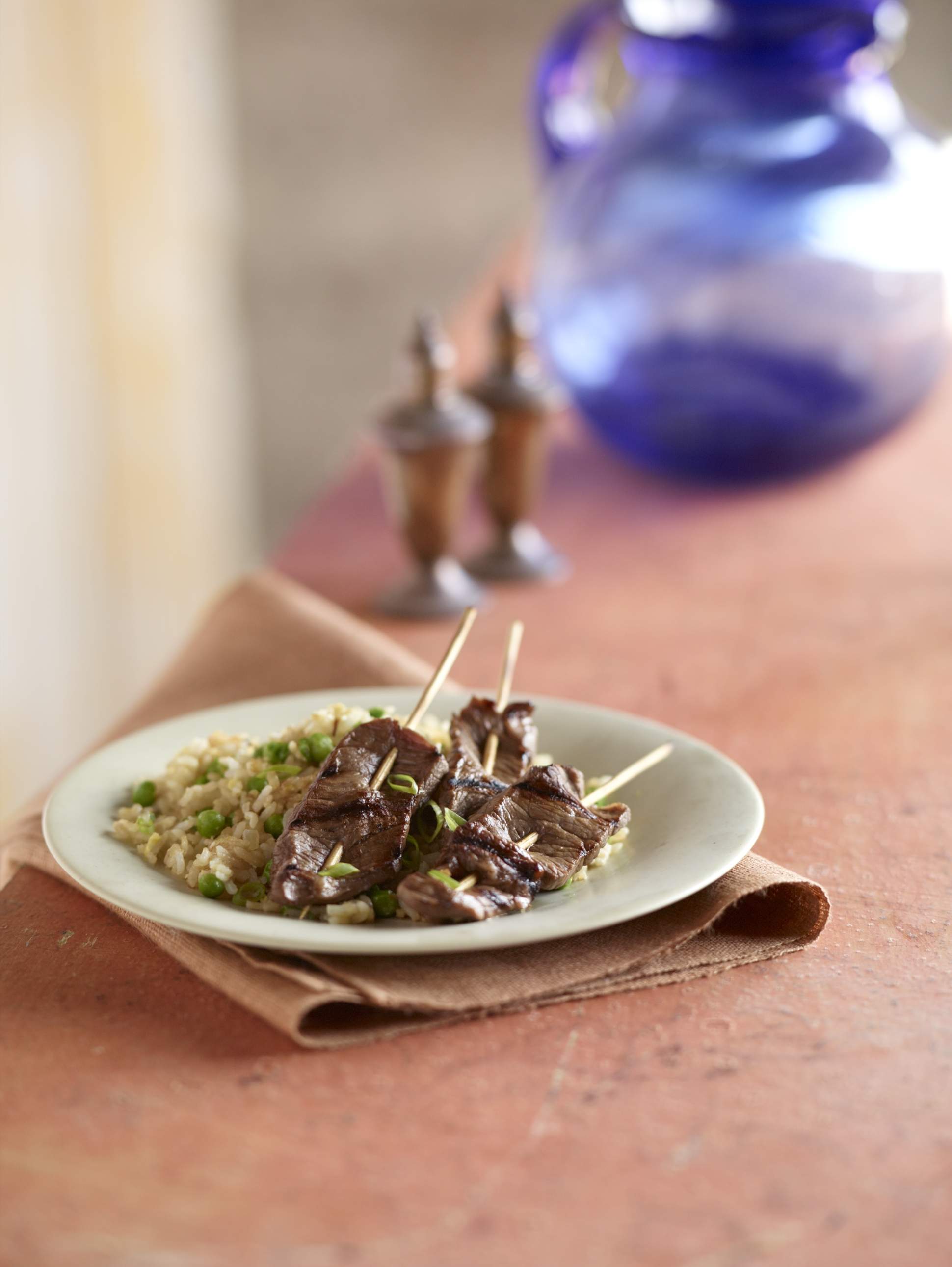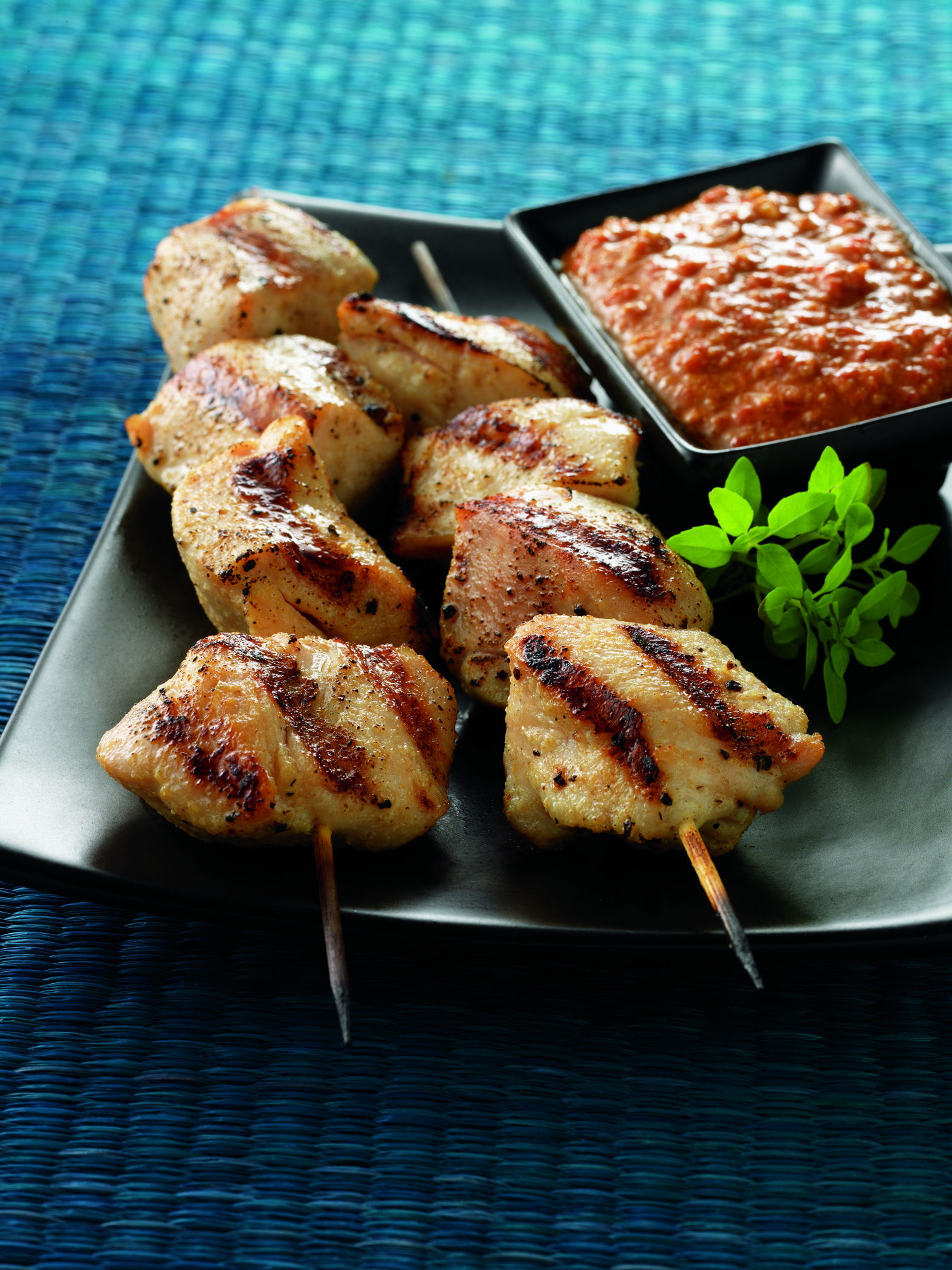Does the prospect of preparing a grilled party menu for more than 10 people make your palms sweat? Kabobs can feed armies. In fact, Middle Eastern armies are credited with the invention of kabobs having used their swords as skewers for meats that were roasted over open-flame fires.

Few cooked dishes generate the country-by-country results you get from a Google search of the word kabob. From Iran to Turkey to Greece and onto India and China, kabob variations abound all over the world today. From simple to lavish, kabobs are the epitome of Eastern street food. They are easy to prepare, take only a few minutes to cook, and are great companions for all kinds of sauces and garnishes.
And that’s why kabobs should be on your next cookout menu. Buy a variety of beef, chicken, pork, and lamb. Meaty cuts are best—a boneless leg of lamb, boneless loin of pork, or pork tenderloins are all good candidates for cutting into uniform cubes of 1 to 1 1/2 inches and threading on skewers. When it comes to beef, tenderloin roasts or tails are excellent choices, as are hanger steak, tri-tip, and hip sirloin.
Getting Skewered
The hardest part is threading all those cubes onto skewers. Get 2 or 3 helpers and the skewers will be done in no time. And once that’s done the rest is easy.
Metal skewers are great for their convenience and sturdiness. Bamboo skewers should be soaked in water for at least 30 minutes before using them. This way they won’t burn up during searing.
One preparation approach is to coat the meat cubes with olive, sea or kosher salt, and freshly ground pepper. If you have to do the skewers well ahead of time, omit the salting until the kabobs are just about to hit the heat. You can throw everything into a large bowl and mix in the oil and seasonings and then toss to coat. Or you can thread the skewers and then apply the olive oil, pepper, and salt.
The height of quality and convenience is Lobel’s pre-skewered Ready-Made Kabobs in seasoned and unseasoned varieties.

Simplicity is its Own Reward
Keeping it simple allows the meat flavors to develop while grilling. The toppings, sauces, and garnishes may be applied to the final product. A splash of olive oil, a dollop of a compound butter, some chimichurri, a peppery Szechuan sauce, Indian curry, and just about anything you can imagine can be paired with kabobs.
Serve them in pita or flat bread, in a hoagie roll, or on a plate with rice or roasted potatoes and a roasted ratatouille.
Kabobs are nothing but fun!
 © 2012 Weber-Stephen Products LLC. Recipe from Weber’s On The Grill™: Chicken & Sides by Jamie Purviance. Used with permission.
© 2012 Weber-Stephen Products LLC. Recipe from Weber’s On The Grill™: Chicken & Sides by Jamie Purviance. Used with permission.
Mobs of Kabobs
As far as cooking a quantity of kabobs, it is a good idea to cook meats and vegetables on different skewers. The truth is that as pretty as meat-and-vegetable kabobs look, they are not as practical to cook in a way that allows everything on the skewers to be cooked properly and done at the same time.
Separating the meat skewers from the vegetable skewers also helps to provide for vegetarian guests.
Kabobs can be grilled over moderate direct heat for 4 to 6 minutes total cooking time. Alternatively, you can use indirect heat to sear the kabobs and then transfer them to the warm zone to finish cooking. This method shortens the cooking time by a minute or so—not much time, but it adds up when cooking in quantity.
If you have a large Weber kettle, you can build the indirect fire all in one grill. If you are cooking for 30 or more people, you may want to have two grills: one to run hot for searing and the other at medium heat for finishing. This way you can put the lid on and grill-roast the kabobs after they have finished searing.
As a final note, plan on grilling some of everything first and plan to cook to replenish platters as needed.
What’s your favorite type of kabob? What’s your favorite kabob dipping sauce or side dish? Do you have a kabob-grilling strategy? Do you like to make kabobs for large groups or small?



Leave Your Response